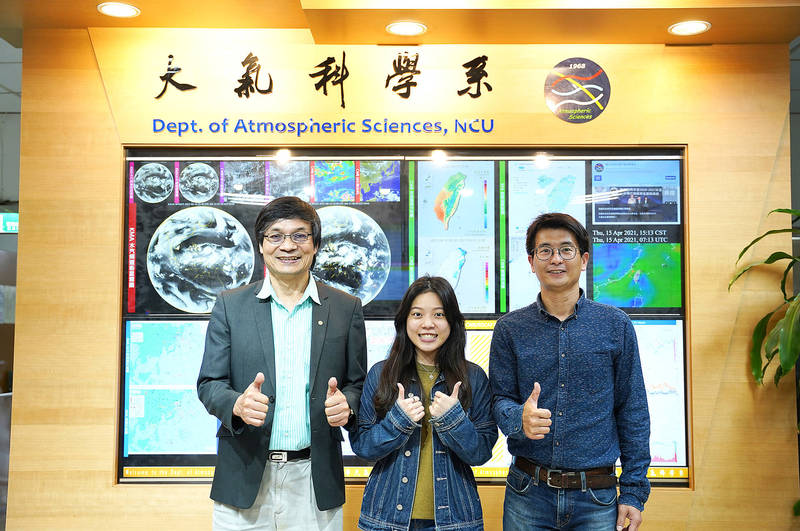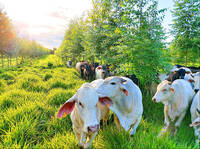《TAIPEI TIMES》 Taiwan-US study shows pollution, rainfall link

National Central University Department of Atmospheric Sciences professor Lin Pay-liam, left, associate professor Wang Sheng-hsiang, right, and student Chen Ying-chieh are pictured in an undated photogrpah taken at the university in Taoyuan. Photo courtesy of National Central University
By Lee Jung-ping and Kayleigh Madjar / Staff reporter, with staff writer
New research suggests that air pollution indirectly reduces the amount of rainfall in northern Taiwan during autumn, which might have exacerbated the water shortage at New Taipei City’s Shihmen Reservoir (石門水庫).
Researchers from National Central University (NCU) and the State University of New York at Albany analyzed 13 years of satellite and surface data for the study, which was published on March 23 in the journal Atmospheric Chemistry and Physics.
Taiwan receives most of its annual rainfall from May to September during the plum rain and typhoon seasons, NCU Department of Atmospheric Sciences associate professor Wang Sheng-hsiang (王聖翔) said.
Although there is relatively less rainfall during fall and winter, it is key to maintaining reservoir levels, Wang said.
However, it is also when pollution tends to be most severe, which not only affects health, but can also affect the characteristics of rain droplets, he added.
Researchers analyzed data from 2005 to 2017 on concentrations of PM2.5 — airborne particulate matter smaller than 2.5 micrometers — meteorological parameters, such as wind direction and temperature, raindrop size, aerosols and cloud properties, to determine the effect that aerosols might have on clouds and drizzle during autumn over northern Taiwan.
They found that in the densely industrialized northwest, the season is mainly dominated by warm, thin and broken clouds, which are defined as having an internal temperature of at least 0°C.
Aerosols were discovered to have an indirect effect on the clouds, meaning that as aerosol concentrations rose, cloud droplets became smaller and more numerous, with drizzles occurring less frequently.
The data also reflected this, as “polluted” days saw about 6.8mm less daily average rainfall than “clean” days, with polluted days defined as the 80th percentile of daily average PM2.5, while clean days fell in the 20th percentile.
Lead author of the study, Chen Ying-chieh (陳映潔), obtained a graduate degree from NCU’s Department of Atmospheric Sciences.
As a graduate student, she was in the first cohort of the US-
Taiwan Partnership for International Research and Education (PIRE), which sent her on a two-month exchange to the US.
PIRE is run by the Ministry of Science and Technology and the US National Science Foundation through NCU and the State University of New York at Albany. The program aims to promote research collaboration on weather and climate prediction, and emergency response strategies.
新聞來源:TAIPEI TIMES














